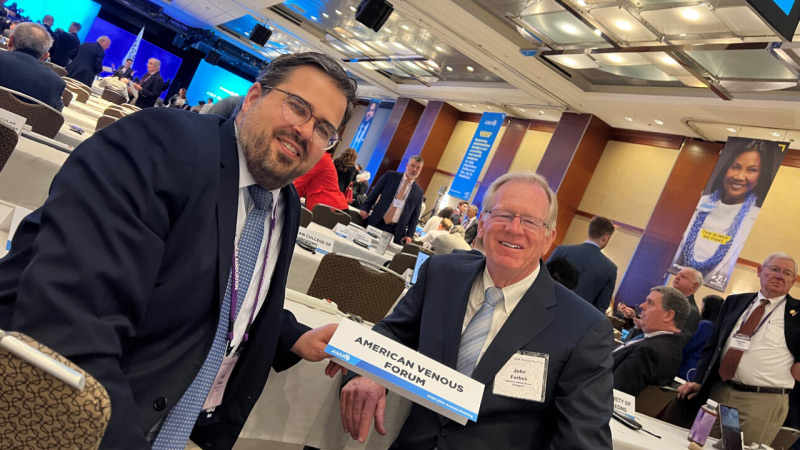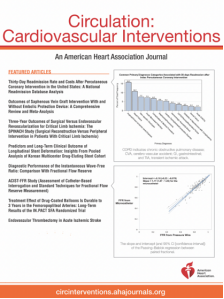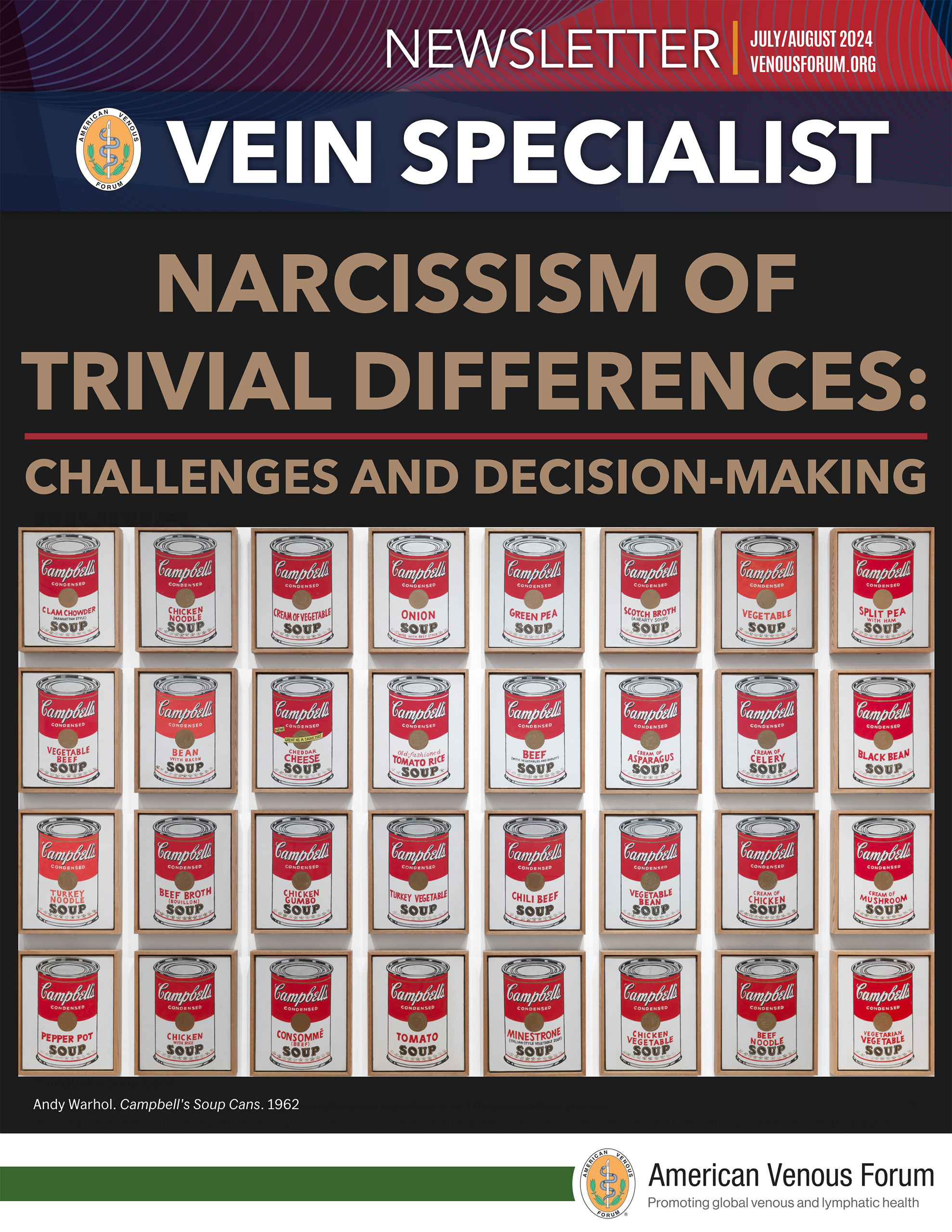
July/August Issue of Vein Specialist
Iliofemoral Thrombus Management:
Does device choice really matter?
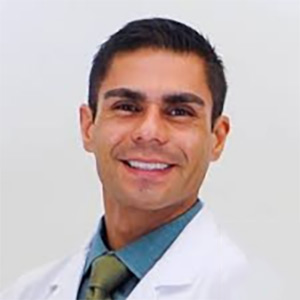
Edgar Guzman, MD, FACS
Member, AVF Newsletter and Early Career Committees
In an amusing corner of social media Ford F-150 owners trade barbs with their Chevy Silverado counterparts. I was in the pickup market some years ago and investigated the segment. While both trucks had definite differences, the practical performance was similar. Ultimately, both were too big and fuel-hungry for my purposes, so I chose a Toyota Tacoma TRD Pro instead. During my tenure as an owner, I encountered a robust aftermarket community, but my identity was never conflated with my choice of transportation for Home Depot runs.
There is also a juxtaposition in medicine between the real benefit of specific techniques and the identity of those who practice them. For example, in the field of pancreaticoduodenectomy, there are strong opinions on whether the alimentary limb should be placed in front or behind the colon to reduce delayed gastric emptying. As you probably guessed, both approaches have similar results that do not justify the passion vested in the topic.
In the field of iliofemoral venous thrombectomy, several devices have emerged and revolutionized the thoroughness and expediency in which clots can be removed. In the conference circuit, we see different groups championing different approaches, but a comparative evaluation must be conducted. While the lack of comparative data hinders this purpose, we can look at reports for individual devices through the lens of clinical experience and try to discern if –for practical purposes– they are the same or distinct.
Thrombus clearance from the iliofemoral segment is essential and, as such, a preferred metric. However, procedural failure is most often due to unsuitable re-establishment of inflow, so this will be factored into my evaluation. I assume that outflow lesions (compressive or post-thrombotic) will be uniformly treated regardless of device use, so this factor will not be considered. Finally, the devices discussed are those that I use routinely, so this article will be limited to the following:
- Boston Scientific EKOS™Endovascular System
- Penumbra Indigo®Lightning Bolt System
- INARI ClotTriever™and RevCore™
- Abbott JETi™Thrombectomy System
The references below are, as expected, disparate in the metrics used. Overall, they report the re-establishment of an unobstructed flow channel in 90-95% of cases, with no single device clearly ahead of another. Nearly 50% of patients treated with the JETi™ device received tPA during the index procedure, a practice that was not reported for the other mechanical devices.
The highest 1-month re-thrombosis rate was reported for ultrasound-accelerated thrombolysis, at 30%. However, the authors point out that most of these failures were due to not placing necessary stents to address underlying stenosis. Failures of anticoagulation accounted for the remainder. The JETi™ group reported a 13% rate of re-thrombosis at the common femoral vein and a 28% rate through the femoropopliteal segment. The Inari and Penumbra devices performed similarly with 1-month re-thrombosis rates of 5% and 6%, respectively.
All the mechanical thrombectomy devices were reported to have a small incidence of conversion to traditional thrombolysis, highlighting the ongoing relevance of this treatment modality. Furthermore, as the ACCESS PTS trial suggests, ultrasound-accelerated thrombolysis can be used to improve chronic post-thrombotic syndrome. The recently released Inari VenaCore™ catheter may offer another option in this space. The Inari RevCore™ is the only device designed to treat thrombosed iliofemoral stents and works well.
In my opinion, the main limitation of the Inari device lies in its inability to enhance inflow by treating the distal popliteal vein onto the tibials or removing thrombus from the deep femoral vein. I am concerned it may even displace thrombotic material into this very important structure. However, if the popliteal and tibial veins are patent, I have found it to be the most expedient solution.
I have used two main strategies to address the inflow. One involves dual catheter thrombolysis through popliteal and/or tibial access as needed, with one catheter placed into the deep femoral vein. The other utilizes a 12 Fr penumbra device in an up-and-over fashion to reach the deep femoral and tibial veins. Unfortunately, this device is time-consuming when applied to the iliofemoral segment, so I often use a larger bore penumbra device or an Inari device for that portion of the procedure. Even though the JETi™ catheter has the lowest profile (6 or 8 Fr), it is contraindicated for vessels 4mm and smaller, limiting its use in the tibial vasculature.
When addressing sub-acute or recurrent disease, I favor ultrasound-accelerated thrombolysis, understanding that there is a high incidence of subsequent mechanical thrombectomy and adjunct maneuvers such as extensive balloon angioplasty and iliofemoral stenting.
Adherence to a single thrombus removal strategy is not justified, as each offers different performance profiles, strengths, and weaknesses. On the contrary, venous proceduralists should strive to broaden their treatment portfolio rather than identify with a single technology.
References:
Strijkers RHW, Gromes J, Arnoldussen CWKP, et al. Ultrasound-accelerated catheter-directed thrombolysis in acute iIliofemoral deep venous thrombosis. J Vasc Surg venous Lymphat Disord 2013; 1:225-230
Garcia MJ, Sterling KM, Kahn SR, et al. Ultrasound-accelerated thrombolysis and venoplasty for the treatment of the postthrombotic syndrome: Results of the ACCESS PTS sudy. J Am Heart Assoc 2020; 9:e013398
Robertson B, Neville E, Muck A, et al. Technical success and short-term results from mechanical thrombectomy for lower extremity iliofemoral deep vein thrombosis using a computer-aided mechanical aspiration thrombectomy dDevice. J Vasc Surg Venous Lymphat Disord 2022; 10:594-601
Shaik A, Zybulewski A, Paulisin J, et al. Six-month outcome of mechanical thrombectomy for treating deep vein thrombosis: analysis from the 500-patient CLOUT registry. Cardiovasc Intervent Radiol 2023; 46:1571-1578
Razavi C, Khalsa B, Openshaw L, et al. Single-session treatment of patients with symptomatic iliocaval and iliofemoral deep vein thrombosis: technical results of a prospective pilot study. J Vasc Interv Radiol 2022; 33:183-188
AVF Earns Seat at AMA’s House of Delegates: Landmark step for AVF advocacy and voice of venous medicine

Loay S. Kabbani, MD
AVF Representative, AMA House of Delegates
Member, AVF Health Policy Committee
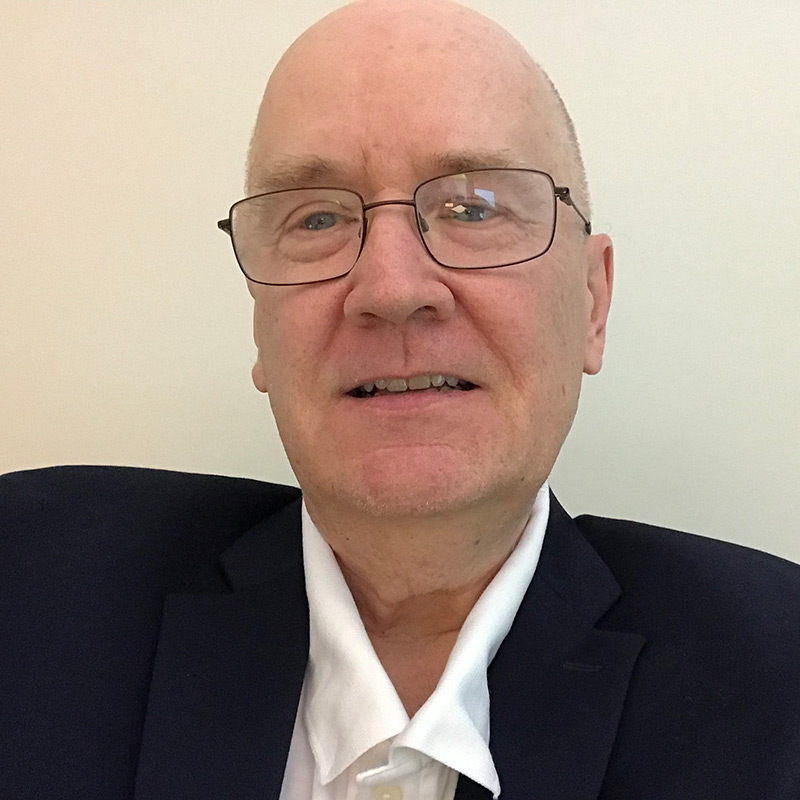
Robert White
Director, Healthcare Policy
Culminating several years of diligent effort, the American Venous Forum was officially seated in the American Medical Association’s (AMA) House of Delegates (HOD) during the AMA’s annual meeting in June 2024. The original recommendation that the AVF pursue a seat on the AMA’s HoD was presented by Past President Lowell Kabnick, MD. Brajesh Lal, MD, Past President of the AVF, initiated this during his tenure as AVF President in 2020.
The HOD is the legislative and policy-making body of the AMA. It has representation from state medical societies, national medical specialty societies, national medical organizations, medical schools, and federal services, including the Public Health Service. The HOD convenes for its annual meeting in June and again in November each year for its interim meeting.
“The House of Delegates functions as a legislative assembly for the American Medical Association. Often referred to as the ”house of medicine,” the HOD provides a platform for physicians to voice their concerns on a wide array of issues affecting medical practice today,” observed Dr Loay Kabbani from Henry Ford Health. Dr Kabbani, who was chosen by the AVF Healthcare Policy Committee and the AVF Board to be the AVF’s first delegate to the HOD, expressed his gratitude, “It’s a privilege to represent the AVF on such a significant platform. My commitment is to attentively listen to our members and Board, advocate professionally on their behalf, collaborate with our partner societies, and ensure that our advocacy efforts result in our members being heard, and our patients receiving the care they rightfully deserve.”
The process of earning a seat at the HOD began several years ago with an initial application to the Specialty Society Section of the AMA. John Forbes, the AVF Executive Director, acknowledged the contributions of AVF members Dan Monahan, Hal Welch, Kathleen Ozsvath, Sheila Coogan, and Mark Iafrati to this achievement. “Full recognition by the AMA as a specialty society opens doors for us in Advocacy and reimbursement, notably by allowing AVF to participate in the CPT coding and RUC valuation processes,” added Forbes.
The RVS Update Committee (RUC) is a group of 32 physicians and other health care professionals who advise Medicare on how to value a physician’s work. .Harry Ma, MD will represent the AVF at the RUC. The Vein Codes are going to come up for evaluation in the RUC. The AVF will be working with the SVS/AVLS/ SVM/SIR to collaborate and have a voice on this issue.
Loay S. Kabbani, MD (AVF’s AMA HOD Delegate) and John Forbes (AVF Executive Director), at the AMA House of Delegates meeting in Chicago, IL, in June.
New Task Force to Explore
AVF Leadership Learning Opportunities

Allison DeGroff
Director of Strategic Initiatives
The American Venous Forum
Current AVF President Ruth Bush is committed to equipping AVF members with the tools they need to effectively lead change in all areas of venous care. She recently appointed Faizal Aziz, MD and Dejah Judelson, MD as chairs of the newly established AVF Leadership Development Task Force.
The goals of the task force are:
- Identify current AVF leadership strengths and areas for improvement.
- Develop strategic initiatives to nurture and enhance leadership skills at all levels.
- Align goals with AVF strategic plan and promote diversity, equity, and inclusion.
- Evaluate the effectiveness of various leadership resources.
- Foster a culture that values and prioritizes ongoing leadership development and learning.
The task force, which is yet to be appointed, has accepted responsibility for assessing existing leadership development opportunities and gathering insight on non-AVF leadership learning resources. In the coming months, AVF members can expect to receive a survey seeking input and feedback which the task force will use to inform its next steps.
All who attend VENOUS2025 in Atlanta will also have the opportunity to participate in an in-person leadership learning experience that promises to affect how you engage in your current leadership roles immediately.
If you have interest in serving on the Leadership Development Task Force, email Allison DeGroff, AVF Director of Strategic Initiatives, at [email protected].
AVF Releases Consensus Statement on Management
of Nonthrombotic Iliac Vein Lesions

Windsor Ting, MD, FACC, FACS
Chair, AVF Membership Committee
Professor, Vascular Surgery
Mount Sinai, New York
Nonthrombotic iliac vein lesion (NIVL) is the primary indication for venous stent placement. When the FDA approved the first stent with venous indications in 2019, the treatment of these patients with stent placement was finally established. Important questions exist regarding who these patients are, the optimal diagnostic strategies, techniques of stent placement, and post-operative management. To answer these questions, VIVA Foundation sponsored a roundtable of leaders in venous disease from the American Venous Forum and the American Vein and Lymphatic Society. This consensus paper was just published in Circulation: Cardiovascular Interventions.
Consensus Statement on the Management of Nonthrombotic Iliac Vein Lesions From the VIVA Foundation, the American Venous Forum, and the American Vein and Lymphatic Society
Originally published on July 22, 2024
Special Announcement from the AVF Research Committee

Ulka Sachdev, MD
Chair, AVF Research Committee
The AVF Research Committee is pleased to announce a virtual retreat on August 24 to identify the main research priorities around varicose vein (C2) disease. While varicose veins affect millions of people, funding attention from a variety of sources has traditionally been poor. We hope to increase visibility of the disease and identify areas that need further understanding. We will host 10 talks with discussion and will have opportunities to rank the main topics to benefit from research support over the next 5 years. The retreat will be open to AVF members to observe and post questions and comments.
Keep an eye out for future communications with more details on the upcoming research retreat.

